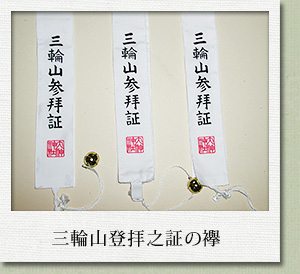My family decided that we needed to take a quick trip to Nara Prefecture to visit our beloved Miwa Jinja. The main reason for our trip is to buy a new Ofuda (a religious amulet) and return the old one. We buy a new one every year and it is best done at the beginning of each year. We also wanted to go because we find this shrine to be incredibly rejuvenating and energizing. While we would have preferred to go to Miwa last weekend, right after the start of the new year, my husband found out that we could do something incredibly special by delaying our trip for a week.
He has always known that people can climb Mount Miwa, home of Ohmononnushi-no-ohkami, the main deity of Miwa Jinja. It is open most of the time, but not the first three days of each year or during the major shrine festivals because it would attract too many people. After weighing our options, we decided we really wanted to climb Mount Miwa and waited an extra week before going.
We got up early in our Airbnb near JR Nara Station and boarded the train to Miwa at 8 am. It takes just over a half hour to travel from Nara to Miwa. We wanted to be at the trailhead when it opens to the public at 9 am. The entrance is tucked back next to Sai Jinja, the shrine building that holds the deity for good health.
Everyone who climbs has to register. My husband paid the ¥300/$3 fee for each person as well as filled out a form that gave our name, address, and phone number. First time climbers must listen to a short lecture. It was at this time we were told that going up the mountain is not a hike. It is a form of worship and religious training. The purpose of the trail isn’t to reach the top, it is to go on a journey. They said it is okay to stop whenever you feel closer to the deity and return from there. There is no judgment for those that don’t walk the entire path. (It wasn’t mentioned at that moment, but on the website it clearly states that foreigners are allowed to climb, but they must do so with someone who can speak Japanese fluently. They must also have a phone that works in Japan, I assume in case they get lost.)
Since it is a religious journey, those that walk the path typically wear white. Since we (and practically everyone else that was there) were not wearing white (and as a way to make sure everyone that registered actually returned), each person was given a wide white ribbon with a bell on the end. We were told to wear it the entire time.
 |
| Photo credit: oomiwa.or.jp |
Because this is a sacred place, meant for contemplation and reflection, they informed us that taking photos was prohibited. I felt a bit disappointed by this, but I understood the reasons for the rule.
We knew the trail would be steep, so we each grabbed a bamboo walking stick that would assist us along the way. There is a big box of them in various sizes right next to the entrance of the trail.
After cleansing ourselves with shrine prayers, waving special sticks adorned with sacred paper over our heads and bowing at the entrance, indicated by the Shinto rope that defines areas of sacred space, we thanked the deity for allowing us to go up the mountain and started our ascent.
To be continued...




No comments:
Post a Comment